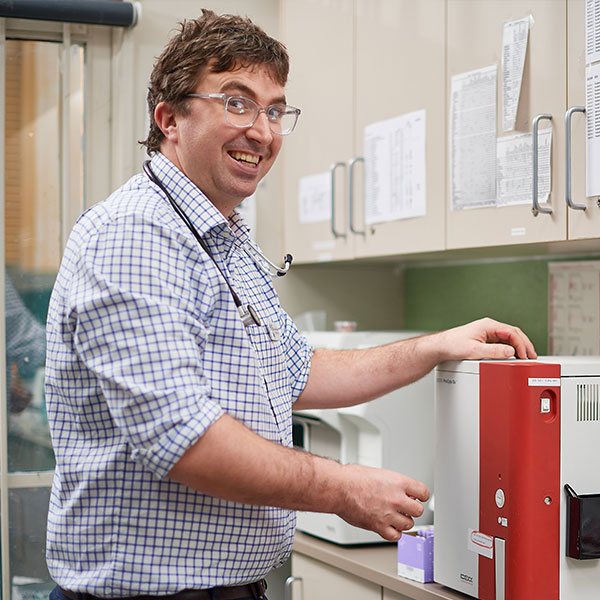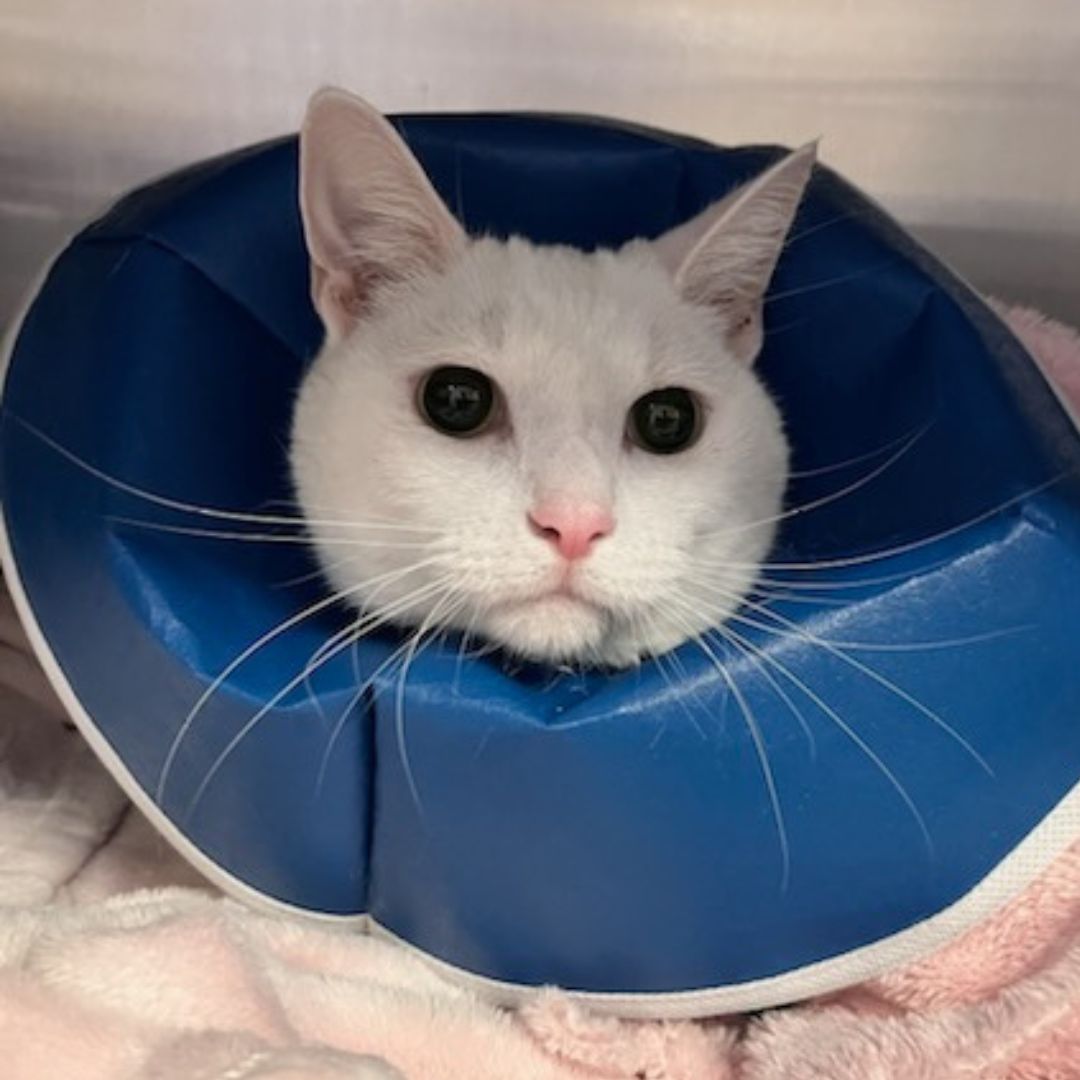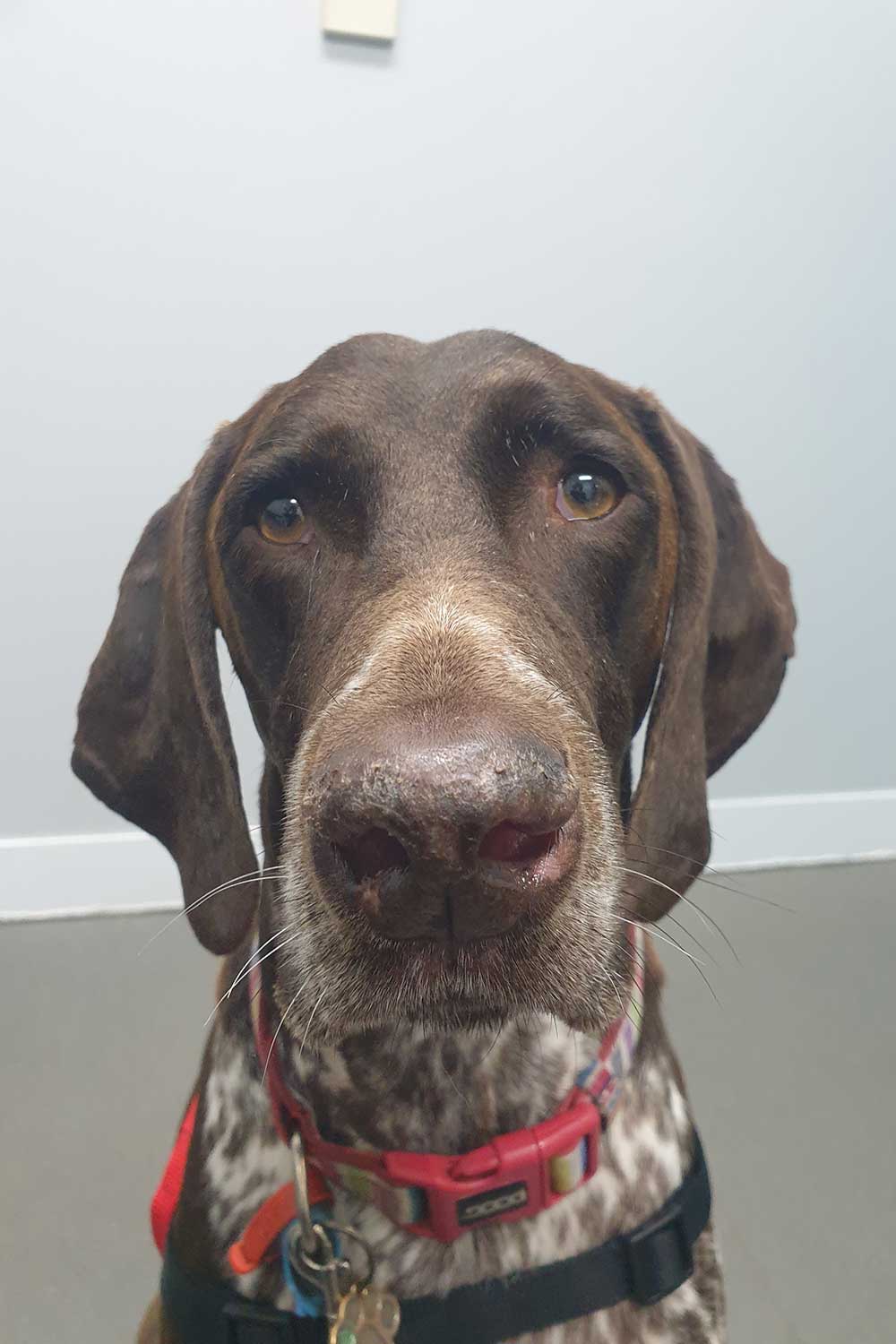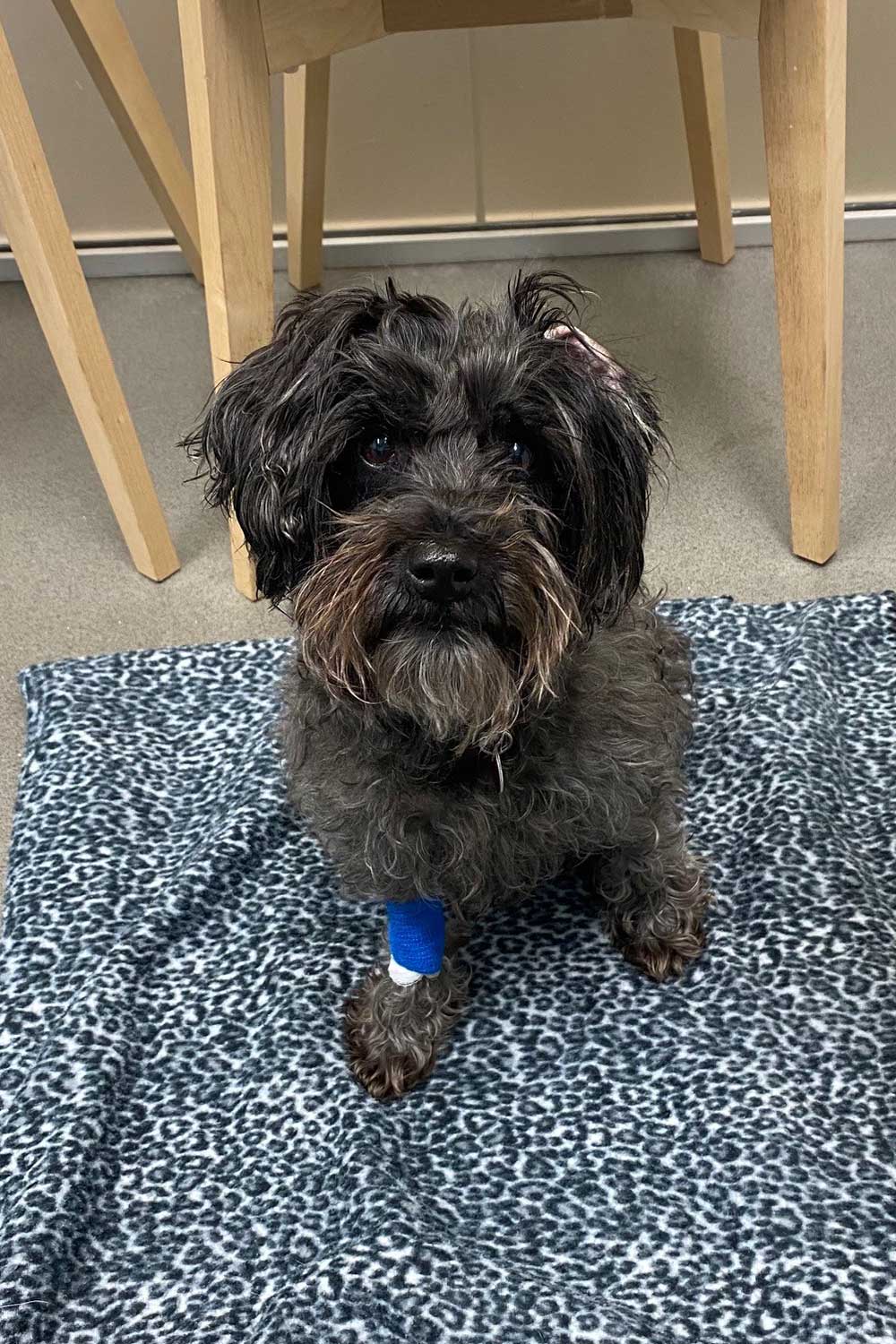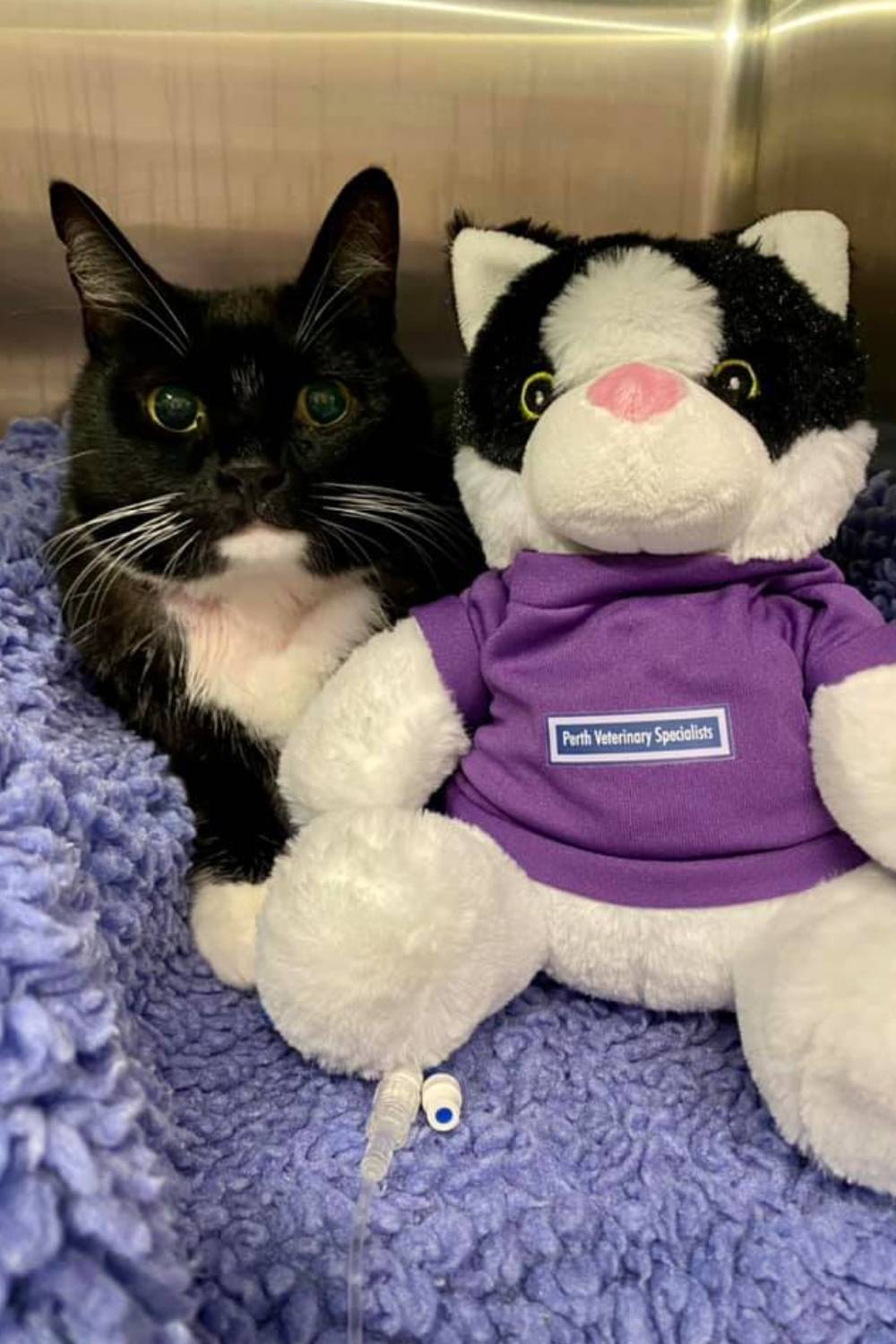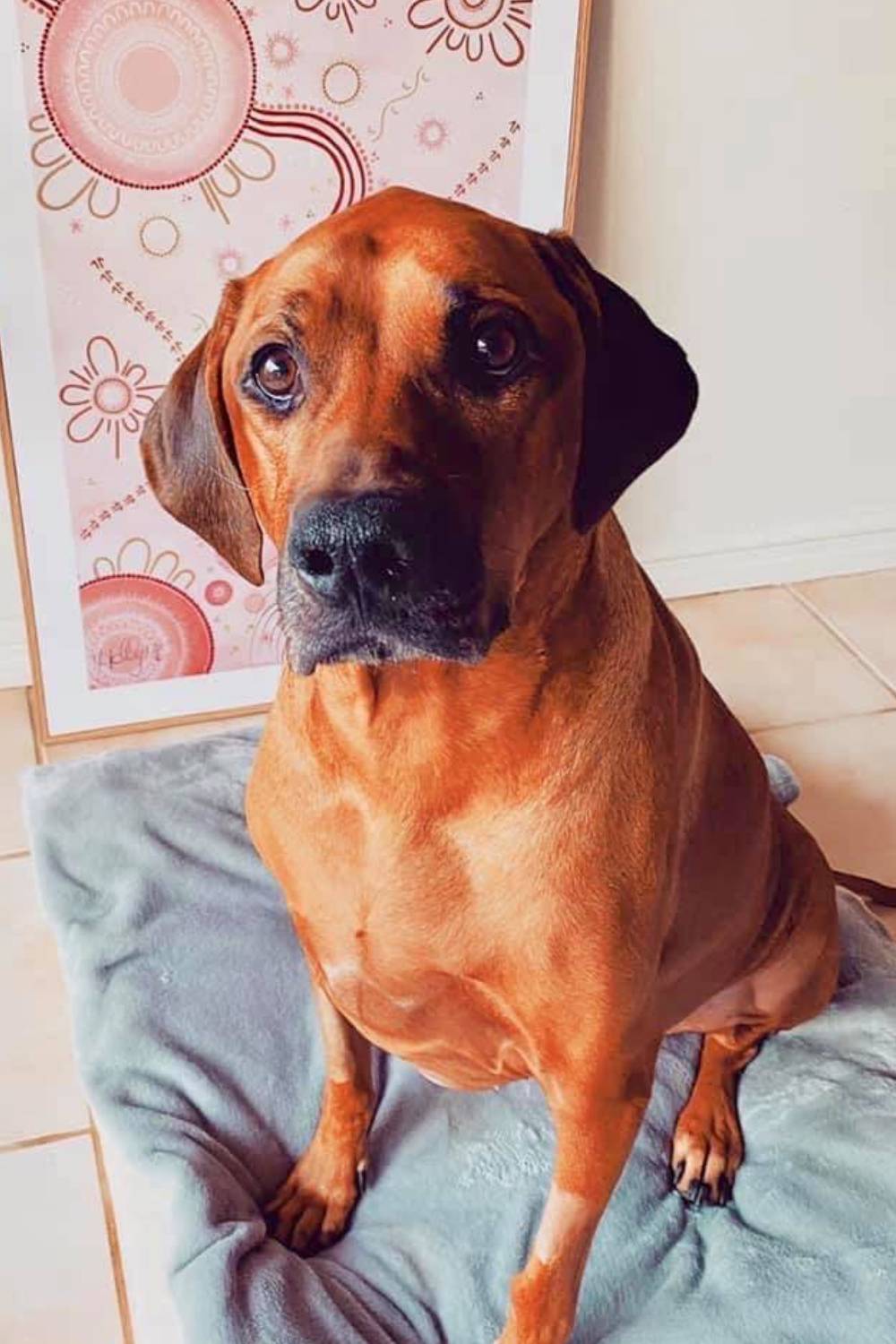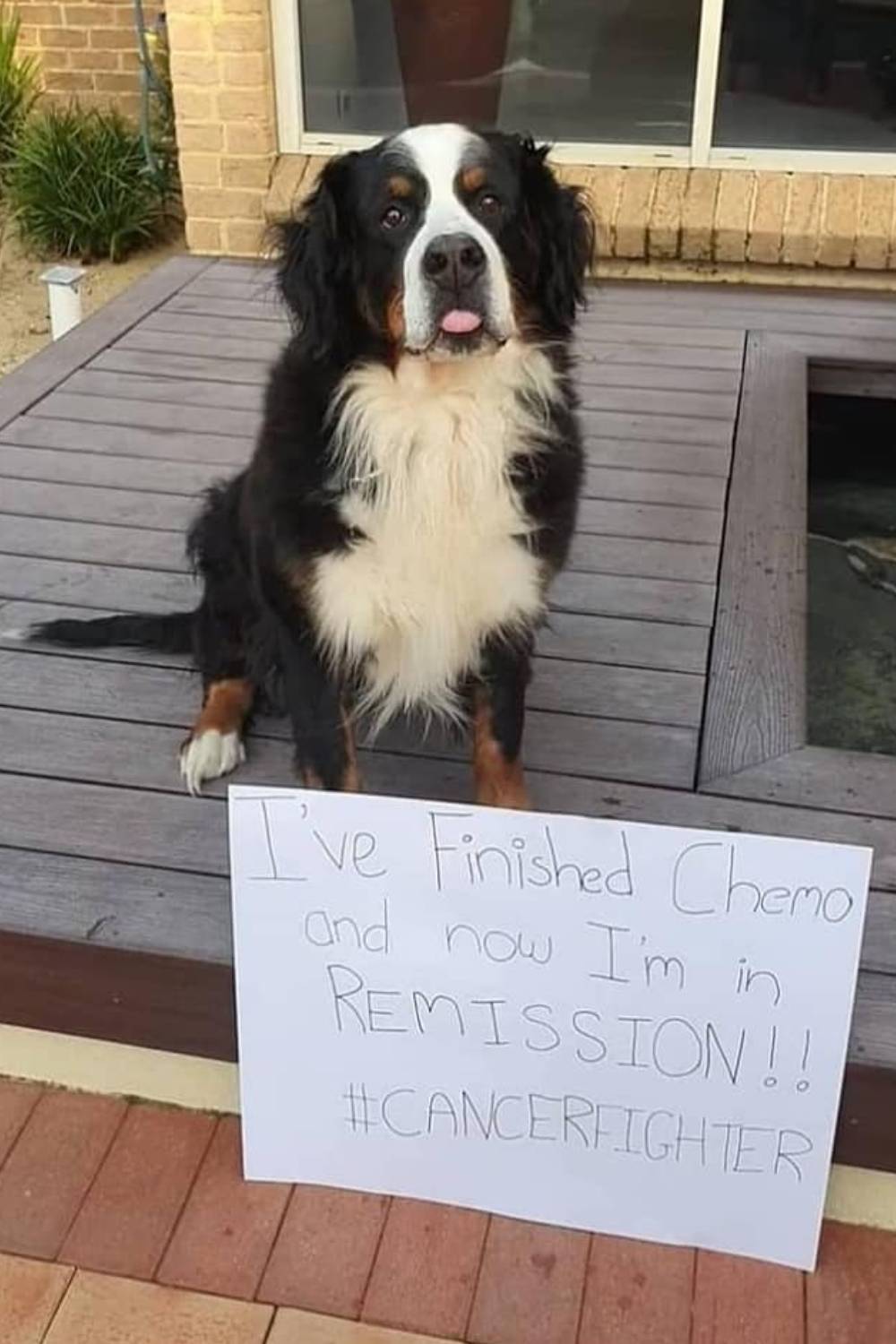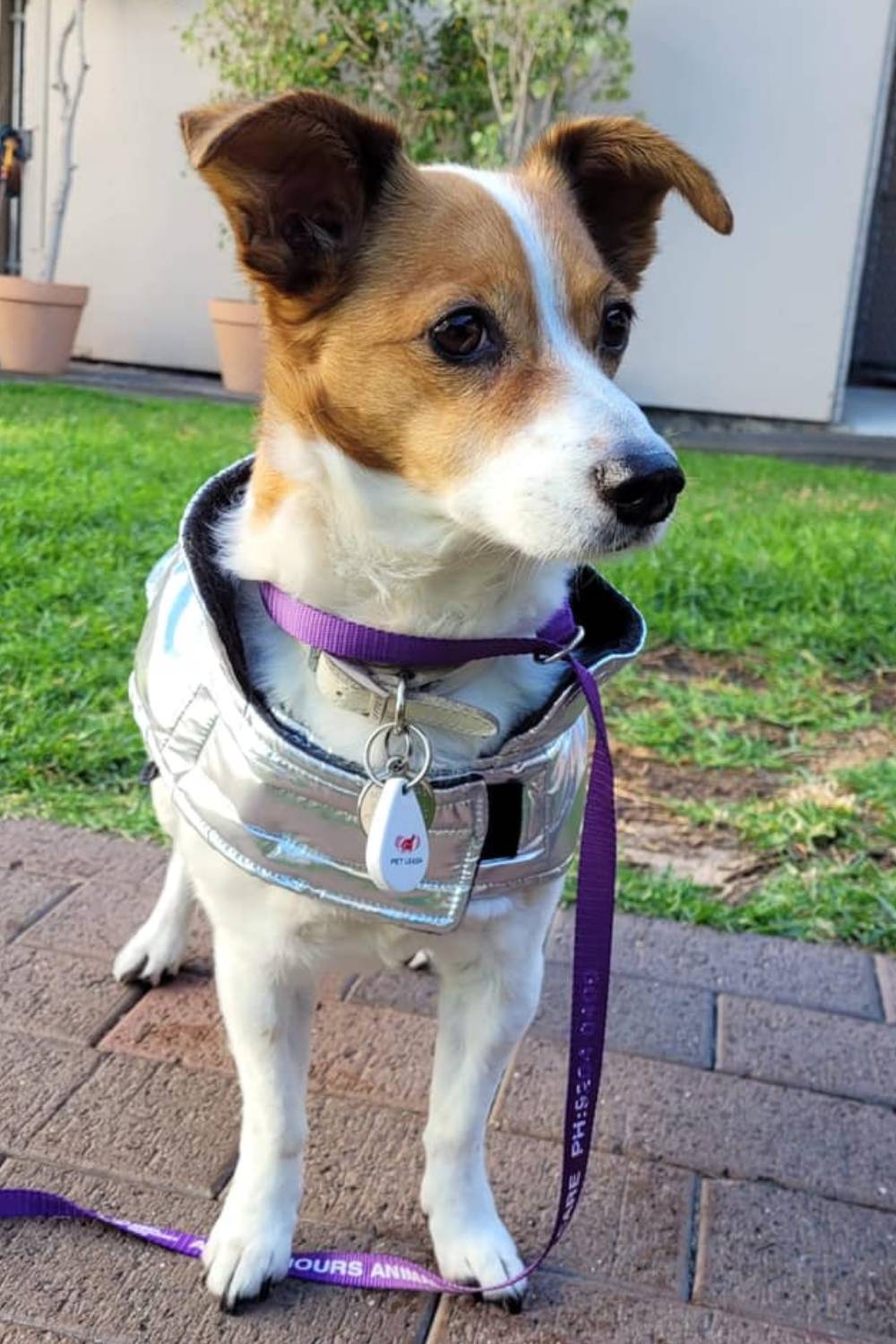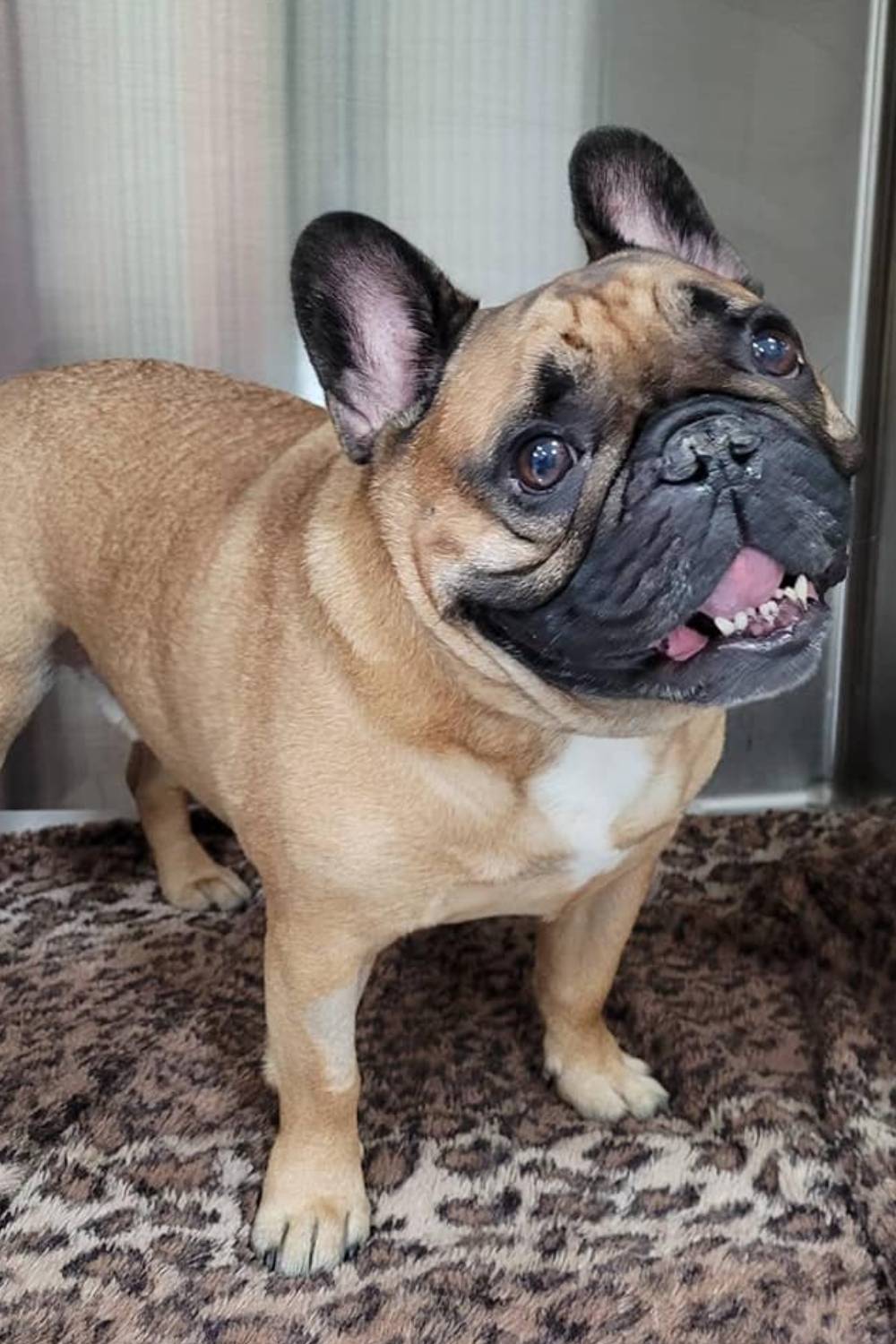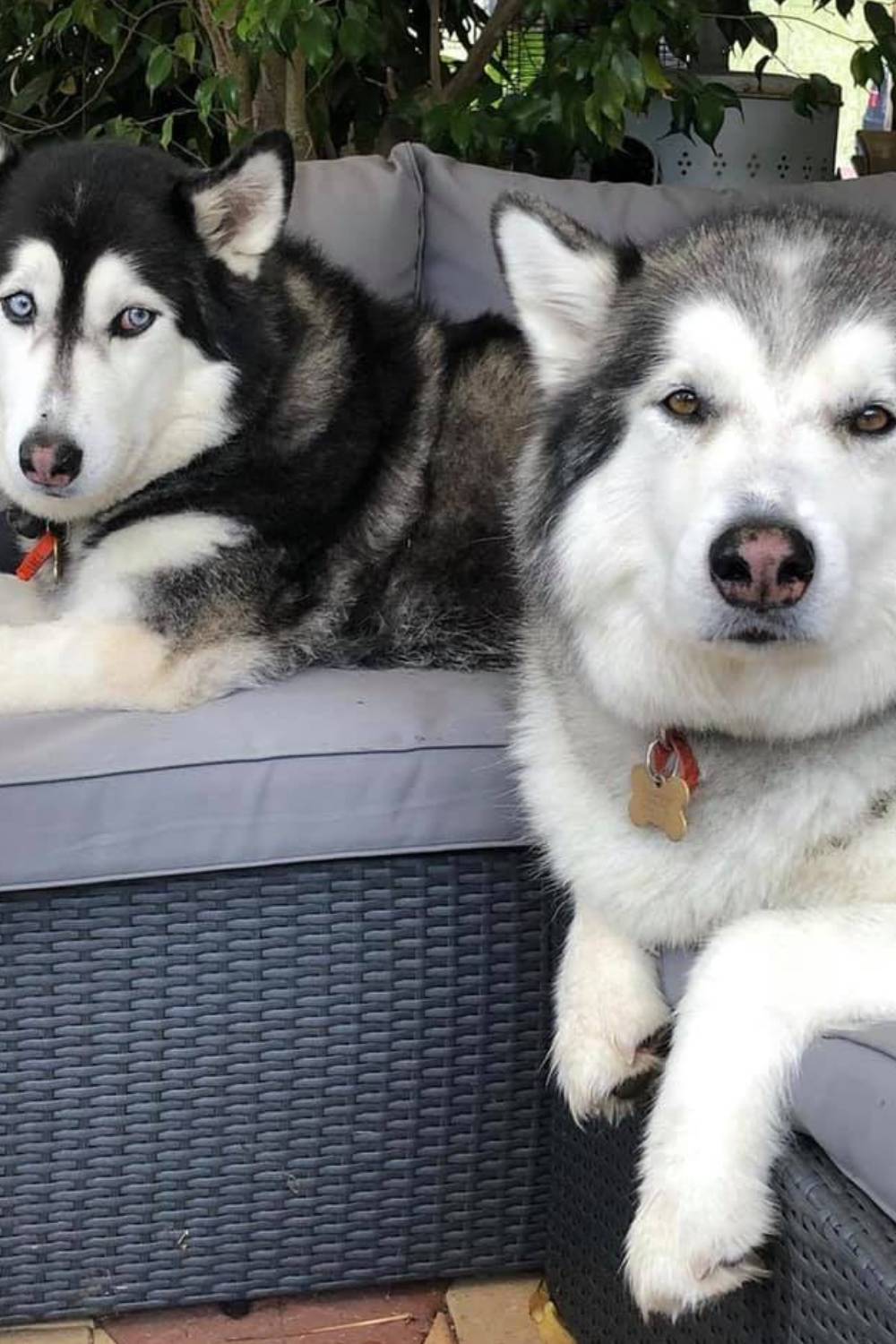Common Pet Cancers
Here are some of the common cancers we treat. Please note no two cases are the same and information is general in nature. Your vet may provide information and treatments differing from this and more specific to your case.
Lymphoma
Lymphoma is the most common cancer formed from white blood cells that occurs in dogs and cats. However, the chance of any one dog developing this disease over any one-year period is less than 1 in 1000. This disease is similar to non-Hodgkin’s lymphoma in people. Lymphocytes are the type of white blood cells that produce antibodies (B cells) and help to fight against viruses and cancers (T cells). Most lymphomas are due to cancerous B cells. Because the natural behaviour of lymphocytes is to circulate around the body, the same behaviour continues once they become cancerous. They are typically systemic, or body-wide, regardless of where the disease is detectable. For most, the cause of the disease is unknown, although there may be a connection in dogs to heavy exposure to paints and solvents, high voltage power lines and 2,4 D herbicide. In cats, sharing a house with smokers can increase the risk as does FIV (the feline “AIDS” virus) and Feline Leukaemia Virus. Dog breeds such as the boxer, Border Collie and Golden Retriever appear to be at increased risk. There has been a line of bullmastiffs reported with an extremely high risk of lymphoma.
The disease is rapidly fatal for most. Most dogs and cats succumb within 2 months of diagnosis if treatment is not initiated. This is an average figure – some will have less aggressive forms and live for 6 or 7 months or more, whilst some will decline within days. Tests run on an aspiration or tissue/liquid biopsy of the tumour can accurately determine the sub-type of lymphoma, and whether the disease is likely to behave in an aggressively. These tests also determine what types of medication are likely to be most effective.
Most dogs develop the high-grade (aggressive and rapid) form. Treatment can be either palliative or can aim to reduce the cancer burden directly. Palliative therapy often includes corticosteroid (“cortisone”/”steroid”) tablets, which can produce a dramatic short-term benefit in about half of all patients. Length of life is not improved, but quality of life is often much better. The only therapy proven to be very effective in pets is chemotherapy. Drugs are used to kill large numbers of cancer cells (well over 99%), which places the patient into remission. Remission means that the tumour cannot be detected, and is unable to cause any symptoms. Hence your pet will have normal quality of life. For the majority of patients there exists a therapeutic “window” such that medication can result in complete remission for good periods of time, with a low risk of side effects. With all treatments, there exists a risk, and around 1 in 20 patients will have serious reactions to the medication.
Mast Cell Tumours
Mast cell tumours are the most common cancers of the skin and underlying (subcutaneous) tissue in dogs. Whilst the genetic abnormalities that occur within the cancer are well characterised, the causes are unknown. Breeds such as Boxers, Labrador retrievers and Staffordshire bull terriers are at much higher risk than other dogs. Most must cell tumours begin in or under the skin, but rarely can originate in the stomach or intestine. The tumours themselves generally appear as a lump in the skin, and may appear reddened or ulcerated. The tumours vary greatly in their degree of malignancy; some will never be more than a small lump whilst others will grow rapidly and spread elsewhere in the body.
Initially, a diagnosis must be made. At some point, a sample of tissue will need to be sent to the laboratory to determine how aggressive the tumour is. Generally, the cancer will be given a grade, which is an estimate of how aggressive the cells appear to be. Low grade and generally harmless but high grade tumours spread rapidly.
Some mast cell tumours will burrow deeply into the surrounding tissue such that the visible mass is no more than the ‘tip of the iceberg’. The surgeon therefore will take as much tissue as possible around the cancer to decrease the odds of leaving any microscopic cancer behind. Often, only surgery will be necessary to effect a cure. As an alternative to surgery, electrochemotherapy is equally effective for smaller mast cell tumours (less than 3cm diameter).
For high grade tumours or especially if the location prevents aggressive surgery from being performed (e.g. the leg or face), medications are available that can make a dramatic difference to the future of these dogs. Furthermore, 95% of the time, there are no side effects. Serious side effects occur 1% of the time.
The medical treatment itself is usually intravenous injections or oral capsules, which are quick and largely painless. Most dogs will receive 8 or 10 treatments over 12 to 16 weeks. Costs can be significant, with each treatment visit being hundreds of dollars.
The most significant breakthrough in recent time has been the introduction of the drugs imatinib, masitinib and toceranib, which can produce remarkable (though temporary) control for patients with advanced disease. Their short-term use allows many dogs to initiate standard therapy and maintain their quality of life for much longer periods of time.
Osteosarcoma
Osteosarcoma is the most common bone cancer in dogs. It most often occurs in a front leg away from the elbow, or a back leg close to a joint. It can also occur in bones of the spine or the skull. Because this is a serious disease that is rapidly fatal without correct treatment, your veterinarian will want to get a diagnosis very quickly. This can be done by taking an aspirate or a biopsy, and having a laboratory examine the sample. In some cases, the lesion is so aggressive that limb amputation may be the logical and humane first step – the sample is then taken at the time of surgery and submitted. Although the surgery required to remove an osteosarcoma is aggressive, it is important to realise that for many dogs this is the most effective form of pain control for the condition. Most dogs do very well after surgery, and are typically more comfortable within a few days of surgery than they were before. Dogs generally will not show symptoms of chronic pain – by the time it is severe enough to notice, for example by decreased appetite, the dog has suffered enormous discomfort.
Chest x-rays or CT are often taken prior to surgery. If the tumour can be seen in the chest (about a 10% chance), most dogs will not live more than 2 or 3 months even with treatment. If there is no tumour visible in the chest, this means that the cancer is not advanced (but will almost certainly be hiding there) and that cancer treatment is likely to be worthwhile. Unfortunately, if surgery is the only treatment, most dogs will not live more than 4 months. With cancer therapy, about half of dogs will still be doing well 12-18 months after surgery, and about 1 in 5 will have many years of good life. Cancer therapy therefore obtains good control of the disease and importantly in most dogs causes no side effects. Only one dog in 20 will have a serious reaction to the medication, which is most often rapidly controlled.
Because of the nature of the drugs used to treat osteosarcoma, you will need to be referred to Perth Veterinary Oncology. In many cases, your veterinarian will be the best person to do the initial surgery. Alternatively, there are surgical specialists at Perth Veterinary Specialists for whom your veterinarian can arrange referral.
Where patients are not expected to cope with amputation (for example due to severe osteoarthritis in other limbs) radiation therapy followed by chemotherapy can have provide similar outcomes to those that undergo amputation and chemotherapy.
New medications, provide effective treatment WITHOUT needing surgery or radiation therapy. Medical-only treatment is not as reliable or as durable as standard treatment (surgery or radiation therapy plus chemotherapy).
Costs can be very high with these sorts of treatment. Surgery may cost several thousand dollars, and medical cancer treatments can cost the same again. The cancer therapy is given via a drip, every 2 to 3 weeks on up to 6 occasions, but does not require overnight hospitalisation. It is important to remember that all the treatment for this disease is designed to restore quality of life, and to then provide as much time as possible. Achieving good quality of life is the primary objective.
Sarcomas
Soft tissue sarcomas are a group of tumours that grow from connective tissues in the body. Often they don’t spread elsewhere but can be a problem due to invading very deeply. High-grade tumours can spread through the body, and the risk of this happening is best determined by submitting a piece of the tumour to the laboratory.
If the risk is low, there are 5 types of treatment available for your pet:
- The most effective treatment is surgery, however this may need to be aggressive to have any chance of cure. In many cases this may mean removal of nearby structures, and for limb tumours, amputation may be required.
- Less aggressive surgery not intending to cure can be followed by daily at-home medication. Recurrence will occur but hopefully after several years; this treatment therefore may be most useful for older pets.
- Electrochemotherapy. The advantage of this technique is that very high concentrations of drug are delivered into the tumour whilst sparing the rest of the body. Chemotherapy side effects therefore do not occur.
- Metronomic therapy. Frequent (daily to every second day), at home treatment which inhibits new blood supply to the tumour and therefore inhibits growth. This approach has proven very successful for low to moderate grade soft tissue sarcomas in dogs, with excellent results.
- Radiation therapy
If the tumour is classed as high grade, the potential for spread becomes higher. In this instance it is preferable to follow removal of the tumour with medical treatment aimed at removing remaining cancer cells elsewhere in the body. This should result in your pet having a significantly longer period of normal quality life. These medications generally will not make your pet ill.
In most cases surgery will be done by your veterinarian, however there will be some procedures for which they may prefer that your pet is referred to a specialist.
Melanoma
Canine oral melanoma
Melanomas are relatively common tumours in dogs, but rare in cats. In both species they can range in behaviour from benign (harmless) to malignant (potentially fatal). For many animals with a melanoma of the skin, surgical removal is curative. The most accurate way to predict the behaviour of a skin tumour is to have a sample sent to the laboratory. Melanomas in locations other than the skin, such as inside the mouth in dogs, or in the eyes of cats are generally more aggressive than the skin form. There are many ways we treat patients with melanoma:
- Surgery. This is the best first-line therapy, and is usually successful in preventing the tumour growing back at the same site. Unfortunately, there are no tests available that detect the tumour elsewhere until the disease is very advanced. In general, if the tumour appears malignant at the laboratory or occurs in a dog’s mouth or cat’s eye, it usually has already spread elsewhere in the body, and most often to the lungs, even though it may not be visible on x-rays for some time.
- Intralesional chemotherapy. Injecting chemotherapy drugs into the tumour reduces the tumour to the micropscopic level at its original site in about half of all cases. The doses used are too small to cause any side effects, and generally only require sedation and local anaesthetic. Most commonly, 4 treatments are given, each a week apart. Not all patients are suitable for this treatment.
- Systemic chemotherapy. This form of chemotherapy is used to treat the whole body and hence fight cancer wherever it has spread to. The way in which this is done in animals results in no serious side effects in 95% of patients. It is only used in patients who are at very high risk of their cancer having spread through the body.
- Anti-blood vessel treatment. In patients with very advanced disease but good quality of life, treatment against the blood vessels is more effective than fighting the cancer itself. Successful treatment limits further growth of the tumour.
- Vaccination. A vaccine is available that trains the immune system against the cancer. The vaccine is given through the skin but without the use of a needle. It is administered on an out-patient basis, on four occasions each 2 weeks apart. Each visit is similar to those for the preventive vaccinations many dogs receive annually.
- Nutritional changes and pain control. There are several changes that can be tailored to individual patient’s diets to improve quality of life. Pain control can be helpful in animals with advanced disease even if they do not show signs of pain.
Your veterinarian will advise you on how best to commence diagnosing and treating your pet’s cancer. At some point, a specialist opinion may be helpful to offer advice, or to commence some of the therapies listed above. Your veterinarian can organise referral to Perth Veterinary Oncology, at Perth Veterinary Specialists. At the time of consultation, you will be given as much information as possible on how effective any treatments are likely to be for your pet, how much cost will likely be involved, and whether any reactions to the particular treatments are expected.
In addition, we can advise on nutritional and other aspects designed to help your pet fight and/or tolerate the cancer better.
Haemangiosarcomas
Haemangiosarcoma is a cancer that forms from blood vessels. It most commonly forms in the skin, or internal organs such as the spleen or heart. In both dogs and cats, the internal form is very serious and without treatment, most patients have a life span of weeks to months. The skin form can be aggressive in some cases, and the laboratory results following surgical removal or biopsy will determine this. There are 3 successful forms of treatment available at present to fight this disease. The first is surgery. If possible, all visible disease needs to be removed. If this involves removal of a skin haemangiosarcoma, then surgery alone can be curative. For all other forms in dogs and cats, tumour spread elsewhere is expected to have occurred even though it usually will not be visible or detectable immediately.
The other 2 forms of treatment involve the use of medications. Medical treatment is available that results in significantly longer periods of normal quality of life following surgery. Whilst not every patient responds, most experience a good 6 to 12 months or longer. The treatment is given in such a way that side effects are uncommon. Treatments are generally given on 12 occasions, two weeks apart and require that your pet be in hospital with us for four hours on each occasion. Costs can be high, with medical cancer therapy treatments costing hundreds of dollars per treatment visit. Treatment is not curative though some patients will live normal lives for several years.
Alternatively, there is treatment available that can prevent blood vessel growth leading to a slowing down of tumour growth overall. Treatments aimed at preventing blood vessel growth are given at home, and require visits and blood testing a month apart initially, but less often later. Treatment costs are likely to be a few dollars per day for this form of therapy.
The 2 forms of medical treatment above work in different ways and therefore ideally are used together, giving many pets the potential for normal quality of life for much longer periods to spend with their family.
In addition, we can advise on nutritional and other aspects designed to help your pet fight and/or tolerate the cancer better.
Squamous Cell Carcinoma
Squamous cell carcinoma is a common cancer of the skin and mouth in dogs and cats. The skin form is typically the result, as in people, of excessive sun exposure, but not necessarily sunburn. Skin cancer is often best frozen or surgically removed, and your local veterinarian is often the best person to do this, without the need for referral to a specialist. However, in some situations your pet will benefit from the expertise available at Perth Veterinary Oncology.
When the cancer occurs in the mouth, it is NOT the result of sunlight exposure – the cause is unknown, though for cats it has been associated with household smoke. In cats, the disease is particularly aggressive and generally not curable. Surgery can be done, but must be aggressive. Alternatively, injections of chemotherapy can often control the disease, and do not cause ‘chemotherapy’ side effects. For dogs, the prognosis can be better, and for some, cure is possible.
Your veterinarian will advise you on how best to commence diagnosing and treating your pet’s tumour. At some point, a specialist opinion may be helpful to offer advice, or to commence some of the therapies listed above; your veterinarian will be happy to organise referral. At the time of consultation, you will be given as much information as possible on how effective any treatments are likely to be for your pet, how much cost will likely be involved, and whether any reactions to the particular treatments are possible.
Other Carcinomas
Carcinomas are cancers that originate in tissues that line the inside or outside of organs, such as the skin, lungs and intestine, or from glandular tissues such as the breast. They vary in how aggressive they behave; for some, surgical removal is curative, whilst for others metastatic spread through the body occurs long before the first ‘lump’ is detectable. To estimate the behaviour of a cancer, we use information from your description of its appearance and growth, its location, and importantly, the tumour’s appearance under the microscope. This last step means that a biopsy is generally necessary to advise you fully, although there are selected situations where this can be avoided. The biopsy can be taken with a minimally invasive instrument, through to removing a large piece, or if cure is likely, the whole mass. Your veterinarian is well-trained to make the decision on how to biopsy and when to refer to a specialist. For some carcinomas, additional tests on the biopsy can help determine the risk and a specialist can discuss these with you. They do not typically require additional samples to be collected.
Treatment generally is surgical and/or using medication. Medication can be anything from tablets at home, through to injections of chemotherapy which most often do not cause any side effects in cats and dogs. The aim of medical treatment can be to improve quality of life by reducing the amount of cancer present, through to preventing further growth of the cancer, or alternatively palliative treatments are often available that focus on the symptoms rather than the cancer. The decision regarding which of these therapies best suits your pet is generally best made after compiling all the information available, following referral to a veterinary oncologist. Remember that the aim of treating any cancer in pets is based on achieving and maintaining quality of life ahead of all else.
Costs vary depending on what treatment is used. Whilst extensive surgery or chemotherapy can easily cost thousands of dollars, treatments are often available that cost considerably less.
Prostate
Fortunately, testicular cancer in dogs is usually much less aggressive than in man. For the majority of dogs, surgical removal of the tumour is curative. Whilst many people are uncomfortable with the idea of castrating a pet, we all have a duty to safeguard our pet’s health, and castration is kinder than cancer. In general, this surgery will not change your dog’s behaviour other than reducing dominance aggression (but not territorial or protective aggression). Castrated dogs only put on weight if overfed. In most instances, referral is not required; your own veterinarian is typically the best person to perform this procedure.
In some instances, these tumours can spread elsewhere. Evidence of lymph node enlargement or the results from the laboratory that examine the tumour after surgery may suggest that more than surgery is necessary. In this case, your veterinarian will advise referral to Perth Veterinary Oncology to discuss treatment of the cancer. Medication can do a lot to keep your dog comfortable and generally doesn’t cause any illness itself.
Finally, some testicular cancers can produce the female hormone, oestrogen. This produces skin changes and hair loss, but can also cause serious damage to the bone marrow that may be irreversible. A blood test will detect the marrow injury rapidly.
Prostate cancer
Prostate cancer is the most common reason for a castrated dog to have a large prostate. Castration does not prevent prostate cancer in dogs, and does not slow it down once it has developed. Prostate cancer in dogs can respond to cancer drugs. The result is not cure, but often a dog with normal quality of life for 6-12 months. Surgery can sometimes help but may cause urinary incontinence. There are several ways that many of the symptoms of prostate cancer in dogs can be eased with various medications.
Mammary (breast)
Breast cancer, (referred to as mammary carcinoma), is a relatively common disease in dogs and cats. Animals desexed at or before 6 months of age have been reported to have the lowest risks in some studies but this is by no means certain. Around 5 out of every 6 breast growths in cats and half in dogs, are malignant. This means that they are showing changes under the microscope which indicate the potential for the cancer to spread elsewhere in the body, and therefore to be fatal. If a malignant cancer is suspected or shown on pathology results from a biopsy or excision, assessment of the lymph nodes and lungs is recommended to assess for metastasis (spread of the cancer). If x-rays and CT do not show the tumour, it only means that the cancer is not advanced (It takes over 100 million cancer cells to show up on an x-ray). Many malignant mammary carcinomas require aggressive surgery followed by chemotherapy and/or other therapies. In some cases, further tests can be done on the surgery sample to more accurately determine how aggressive the tumour is; these can readily be organised on referral to a specialist and can be run on the original surgical sample. Some dogs and most cats with malignant mammary cancers do not live more than 3-6 months without further help. Medical treatment has been shown to have the potential to dramatically reduce the numbers of cancer cells elsewhere in the body, meaning that the patients retain normal quality of life for significantly longer periods of time. The majority of patients do not have any side effects limiting their quality of life whilst they are receiving treatment. By the completion of treatment (usually 1-3 months), most treatment protocols will have cost thousands, not hundreds of dollars. Whilst this type of treatment may not be for everybody, at Perth Veterinary Oncology we can also advise on other aspects of cancer including nutritional intervention and pain assessment and control. Simple treatments are also available to help slow the cancer’s growth.



